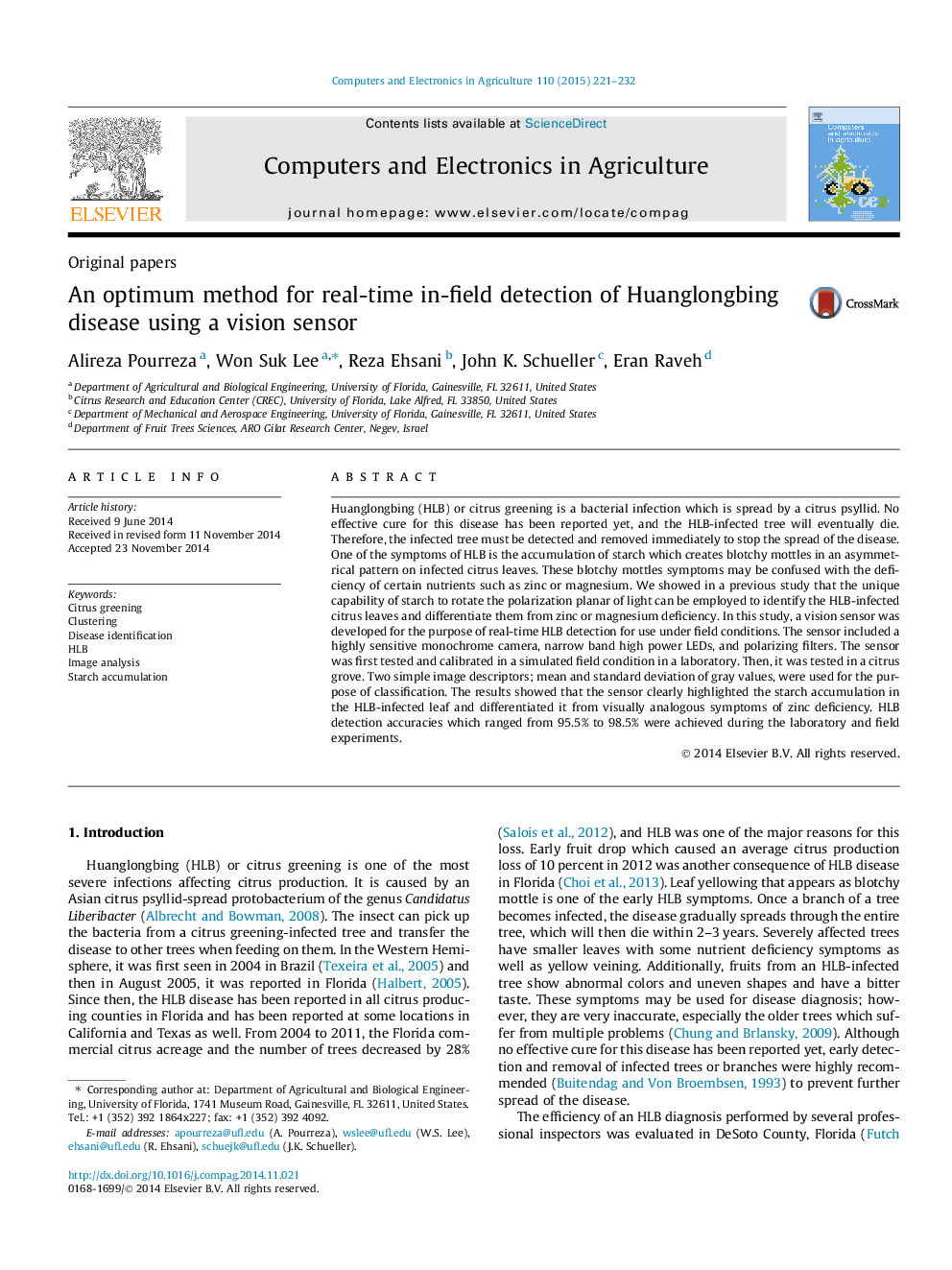| کد مقاله | کد نشریه | سال انتشار | مقاله انگلیسی | نسخه تمام متن |
|---|---|---|---|---|
| 84184 | 158868 | 2015 | 12 صفحه PDF | دانلود رایگان |

• Starch in HLB infected leaf rotates the polarization plane of light.
• HLB infection was accurately identified by the customized vision sensor.
• Vision sensor can identify HLB infection on-the-go.
• Vision sensor was developed using inexpensive components.
Huanglongbing (HLB) or citrus greening is a bacterial infection which is spread by a citrus psyllid. No effective cure for this disease has been reported yet, and the HLB-infected tree will eventually die. Therefore, the infected tree must be detected and removed immediately to stop the spread of the disease. One of the symptoms of HLB is the accumulation of starch which creates blotchy mottles in an asymmetrical pattern on infected citrus leaves. These blotchy mottles symptoms may be confused with the deficiency of certain nutrients such as zinc or magnesium. We showed in a previous study that the unique capability of starch to rotate the polarization planar of light can be employed to identify the HLB-infected citrus leaves and differentiate them from zinc or magnesium deficiency. In this study, a vision sensor was developed for the purpose of real-time HLB detection for use under field conditions. The sensor included a highly sensitive monochrome camera, narrow band high power LEDs, and polarizing filters. The sensor was first tested and calibrated in a simulated field condition in a laboratory. Then, it was tested in a citrus grove. Two simple image descriptors; mean and standard deviation of gray values, were used for the purpose of classification. The results showed that the sensor clearly highlighted the starch accumulation in the HLB-infected leaf and differentiated it from visually analogous symptoms of zinc deficiency. HLB detection accuracies which ranged from 95.5% to 98.5% were achieved during the laboratory and field experiments.
Journal: Computers and Electronics in Agriculture - Volume 110, January 2015, Pages 221–232